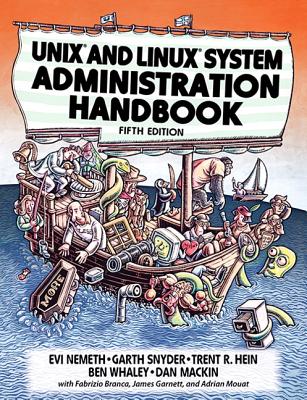Microsoft 365 Certified: Enterprise Administrator Expert Training in Fountain Valley
Enroll in or hire us to teach our Microsoft 365 Certified: Enterprise Administrator Expert class in Fountain Valley, California by calling us @303.377.6176. Like all HSG
classes, Microsoft 365 Certified: Enterprise Administrator Expert may be offered either onsite or via instructor led virtual training. Consider looking at our public training schedule to see if it
is scheduled: Public Training Classes
Provided there are enough attendees, Microsoft 365 Certified: Enterprise Administrator Expert may be taught at one of our local training facilities.
|
We offer private customized training for groups of 3 or more attendees.
|
||
Course Description |
||
| The Microsoft 365 Enterprise Administrator takes part in evaluating, planning, migrating, deploying, and managing Microsoft 365 services. Master these skills today.
Exams Included
This boot camp is geared towards providing students with the necessary skills and knowledge to not only pass the Microsoft Certification exams, but to also excel in their IT career paths. All of our boot camps are all-inclusive and include benefits such as:
- 100% Test Pass Guarantee
- All course materials, practice exams and official certification exams
- Onsite Prometric Testing Center
- Hands-on instruction by a certified instructor
- Breakfast and Lunch provided each day
- Airfare, lodging and transportation packages available (Option 2)
- Certification Prerequisites
Course Length: 6 Days
Course Tuition: $3200 (US) |
||
Prerequisites |
|
| To become a Microsoft 365 Certified Enterprise Administrator Expert, you must earn one of these Microsoft 365 workload administrator certifications: Microsoft 365 Certified: Modern Desktop Administrator Associate, Microsoft 365 Certified: Teamwork Administrator, Microsoft 365 Certified: Security Administrator Associate, or Microsoft 365 Certified: Messaging Administrator Associate. If you have your MCSE: Productivity certification and you pass Exam MS-100 and Exam MS-101, you will earn the Microsoft 365 Certified: Enterprise Administrator Expert certification. | |
Course Outline |
|
Exams included;
Exam MS-100: Microsoft 365 Identity and Services
Exam MS-101: Microsoft 365 Mobility and Security
Design and implement Microsoft 365 services
Manage domains
- add and configure additional domains
- configure user identities for new domain name
- configure workloads for new domain name
- design domain name configuration
- set primary domain name
- verify custom domain
Plan a Microsoft 365 implementation
- plan for Microsoft 365 on-premises Infrastructure
- plan identity and authentication solution
Setup Microsoft 365 tenancy and subscription
- configure subscription and tenant roles and workload settings
- evaluate Microsoft 365 for organization
- plan and create tenant
- upgrade existing subscriptions to Microsoft 365
- monitor license allocations
Manage Microsoft 365 subscription and tenant health
- manage service health alerts
- create & manage service requests
- create internal service health response plan
- monitor service health
- configure and review reports, including BI, OMS, and Microsoft 365 reporting
- schedule and review security and compliance reports
- schedule and review usage metrics
Plan migration of users and data
- identify data to be migrated and method
- identify users and mailboxes to be migrated and method
- plan migration of on-prem users and groups
- import PST Files
Manage user identity and roles
Design identity strategy
- evaluate requirements and solution for synchronization
- evaluate requirements and solution for identity management
- evaluate requirements and solution for authentication
Plan identity synchronization by using Azure AD Connect
- design directory synchronization
- implement directory synchronization with directory services, federation services, and - Azure endpoints
Manage identity synchronization by using Azure AD Connect
- monitor Azure AD Connect Health
- manage Azure AD Connect synchronization
- configure object filters
- configure password sync
- implement multi-forest AD Connect scenarios
Manage Azure AD identities
- plan Azure AD identities
- implement and manage Azure AD self-service password reset
- manage access reviews
- manage groups
- manage passwords
- manage product licenses
- manage users
- perform bulk user management
Manage user roles
- plan user roles
- allocate roles in workloads
- configure administrative accounts
- configure RBAC within Azure AD
- delegate admin rights
- manage admin roles
- manage role allocations by using Azure AD
- plan security and compliance roles for Microsoft 365
Manage access and authentication
Manage authentication
- design authentication method
- configure authentication
- implement authentication method
- manage authentication
- monitor authentication
Implement Multi-Factor Authentication (MFA)
- design an MFA solution
- configure MFA for apps or users
- administer MFA users
- report MFA utilization
Configure application access
- configure application registration in Azure AD
- configure Azure AD application proxy
- publish enterprise apps in Azure AD
Implement access for external users of Microsoft 365 workloads
- create B2B accounts
- create guest accounts
- design solutions for external access
Plan Office 365 workloads and applications
Plan for Office 365 workload deployment
- identify hybrid requirements
- plan connectivity and data flow for each workload
- plan for Microsoft 365 workload connectivity
- plan migration strategy for workloads
Plan Office 365 applications deployment
- manage Office 365 software downloads
- plan for Office 365 apps
- plan for Office 365 Pro plus apps updates
- plan for Office 365 Pro plus connectivity
- plan for Office online
- plan Office 365 Pro plus deployment
Implement modern device services
Implement Mobile Device Management (MDM)
- plan for MDM
- configure MDM integration with Azure AD
- set an MDM authority
- set device enrollment limit for users
Manage device compliance
- plan for device Compliance
- design Conditional Access Policies
- create Conditional Access Policies
- configure device compliance policy
- manage Conditional Access Policies
Plan for devices and apps
- create and configure Microsoft Store for Business
- plan app deployment
- plan device co-management
- plan device monitoring
- plan for device profiles
- plan for Mobile Application Management
- plan mobile device security
Plan Windows 10 deployment
- plan for Windows as a Service (WaaS)
- plan the appropriate Windows 10 Enterprise deployment method
- analyze upgrade readiness for Windows 10
- evaluate and deploy additional Windows 10 Enterprise security features
Implement Microsoft 365 security and threat management
Implement Cloud App Security (CAS)
- configure Cloud App Security (CAS)
- configure Cloud App Security (CAS) policies
- configure Connected apps
- design cloud app security (CAS) Solution
- manage Cloud App Security (CAS) alerts
- upload cloud app security (CAS) traffic logs
Implement threat management
- plan a threat management solution
- design Azure Advanced Threat Protection (ATP) Policies
- design Microsoft 365 ATP Policies
- configure Azure ATP Policies
- configure Microsoft 365 ATP Policies
- monitor Advanced Threat Analytics (ATA) incidents
Implement Windows Defender Advanced Threat Protection (ATP)
plan Windows Defender ATP Solution
- configure preferences
- implement Windows Defender ATP Policies
- enable and configure security features of Windows 10 Enterprise
Manage security reports and alerts
manage service assurance dashboard
- manage tracing and reporting on Azure AD Identity Protection
- configure and manage Microsoft 365 security alerts
- configure and manage Azure Identity Protection dashboard and alerts
Manage Microsoft 365 governance and compliance
Configure Data Loss Prevention (DLP)
- configure DLP Policies
- design data retention policies in Microsoft 365
- manage DLP exceptions
- monitor DLP policy matches
- manage DLP policy matches
Implement Azure Information Protection (AIP)
plan AIP solution
- plan for deployment On-Prem rights management Connector
- plan for Windows information Protection (WIP) implementation
- plan for classification labeling
- configure Information Rights Management (IRM) for Workloads
- configure Super User
- deploy AIP Clients
- implement Azure Information Protection policies
- implement AIP tenant key
Manage data governance
- configure information retention
- plan for Microsoft 365 backup
- plan for restoring deleted content
- plan information Retention Policies
Manage auditing
- configure audit log retention
- configure audit policy
- monitor Unified Audit Logs
Manage eDiscovery
- search content by using Security and Compliance Center
- plan for in-place and legal hold
- configure eDiscovery
|
Course Directory [training on all levels]
Technical Training Courses
Software engineer/architect, System Admin ... Welcome!
- .NET Classes
- Agile/Scrum Classes
- AI Classes
- Ajax Classes
- Android and iPhone Programming Classes
- Azure Classes
- Blaze Advisor Classes
- C Programming Classes
- C# Programming Classes
- C++ Programming Classes
- Cisco Classes
- Cloud Classes
- CompTIA Classes
- Crystal Reports Classes
- Data Classes
- Design Patterns Classes
- DevOps Classes
- Foundations of Web Design & Web Authoring Classes
- Git, Jira, Wicket, Gradle, Tableau Classes
- IBM Classes
- Java Programming Classes
- JBoss Administration Classes
- JUnit, TDD, CPTC, Web Penetration Classes
- Linux Unix Classes
- Machine Learning Classes
- Microsoft Classes
- Microsoft Development Classes
- Microsoft SQL Server Classes
- Microsoft Team Foundation Server Classes
- Microsoft Windows Server Classes
- Oracle, MySQL, Cassandra, Hadoop Database Classes
- Perl Programming Classes
- Python Programming Classes
- Ruby Programming Classes
- SAS Classes
- Security Classes
- SharePoint Classes
- SOA Classes
- Tcl, Awk, Bash, Shell Classes
- UML Classes
- VMWare Classes
- Web Development Classes
- Web Services Classes
- Weblogic Administration Classes
- XML Classes
Business Training Courses
Project Managers, Business Analysts, Paralegals ... Welcome!
Upcoming Classes
Gain insight and ideas from students with different perspectives and experiences.






